Abstract
Poultry feed was contaminated artificially with either Salmonella kedougou or S. livingstone using a two-stage mixing process. Intestinal infection became established in a small proportion of birds when feed containing between 0.1 and 0.3 salmonellas/g was given continuously for 2 or 3 weeks from the day of their purchase as 'day-olds' while nearly all birds became infected when the feed contained 100-300 salmonellas/g. Between these limits a dose response was demonstrated in that the proportion of birds becoming colonized with salmonellas increased as the numbers of salmonellas added to feed was increased. Nalidixic acid-resistant strains of both serotypes were used to facilitate the recovery of organisms. The isolation rate was higher from dilutions of caecal contents inoculated directly onto brilliant green agar supplemented with nalidixic acid than it was from swabs of cloacal faeces, even when an enrichment technique was used. This observation confirms that the incidence of salmonella carriage in flocks will be under-estimated if only cloacal faeces are cultured. Of the two serotypes used S. kedougou proved the more efficient colonizer although for both serotypes variation in infection rates was demonstrated in different groups of birds given feed containing comparable numbers of salmonellas.
Full text
PDF
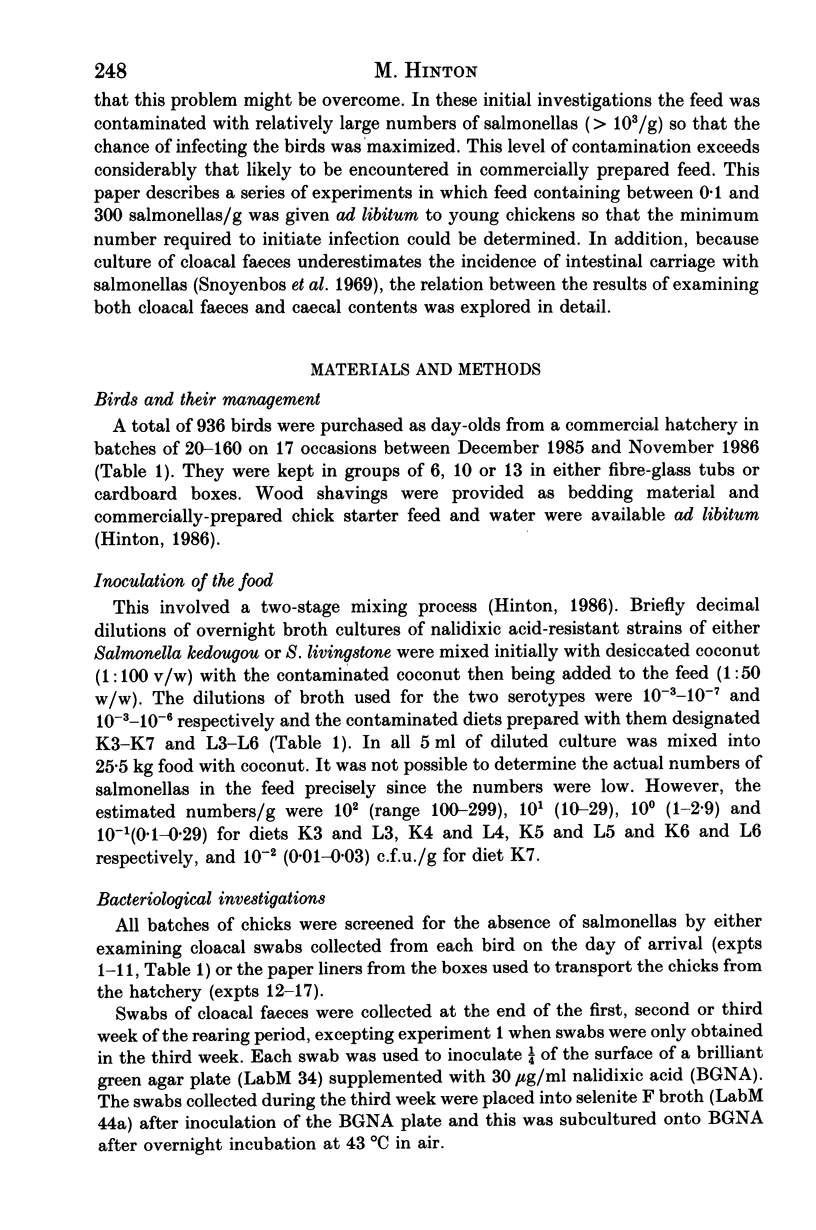

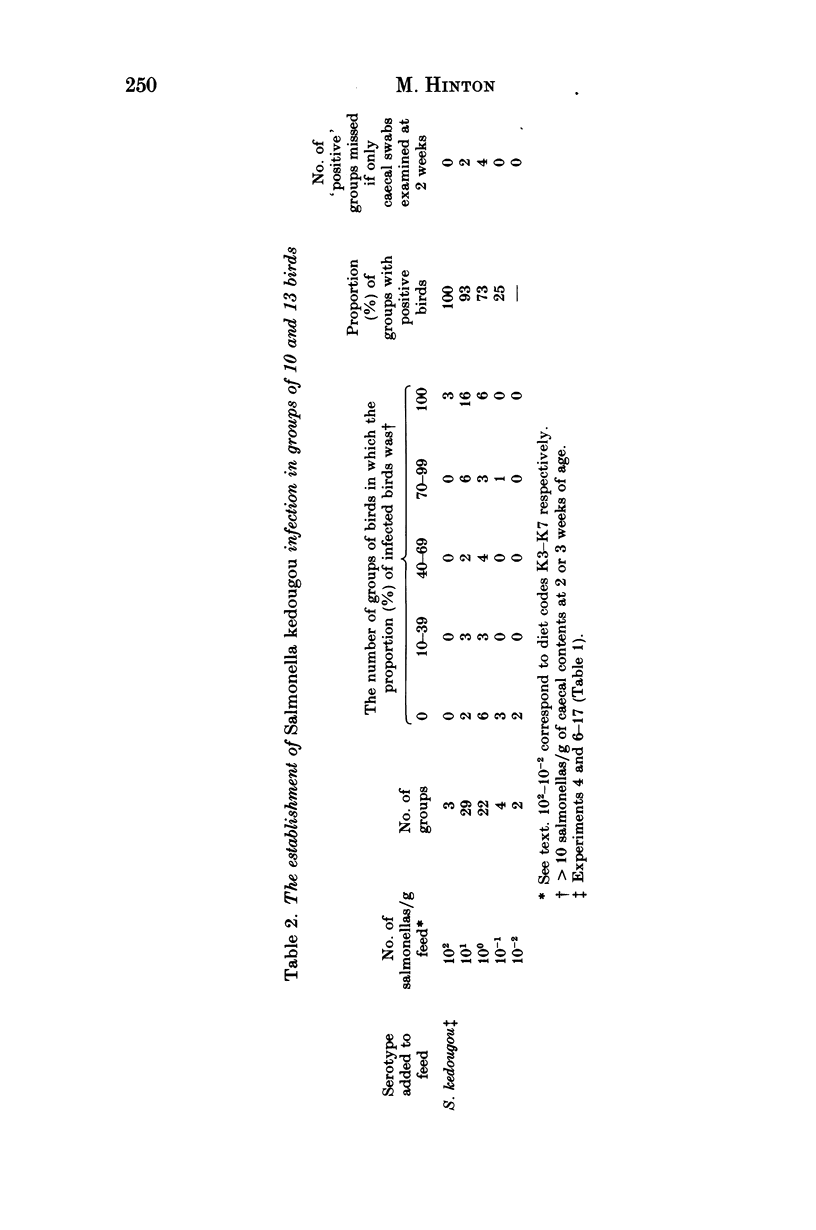
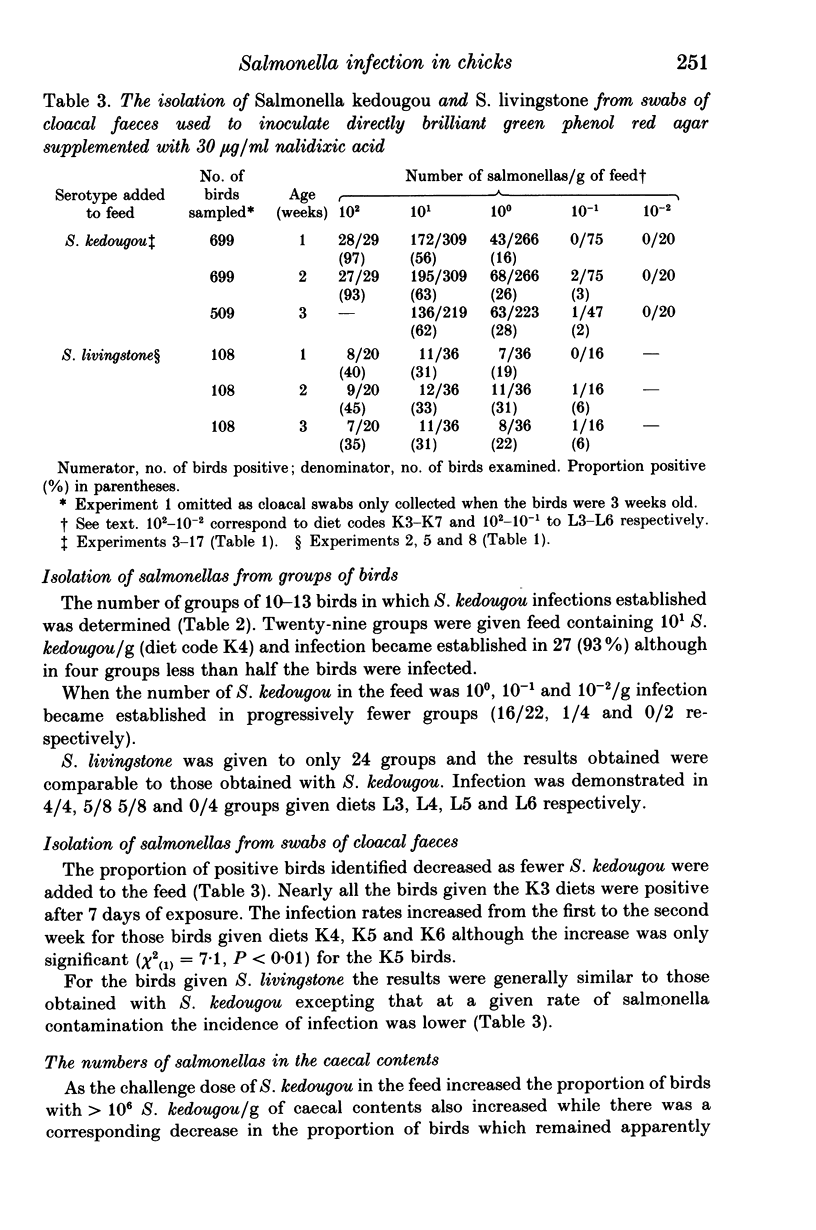
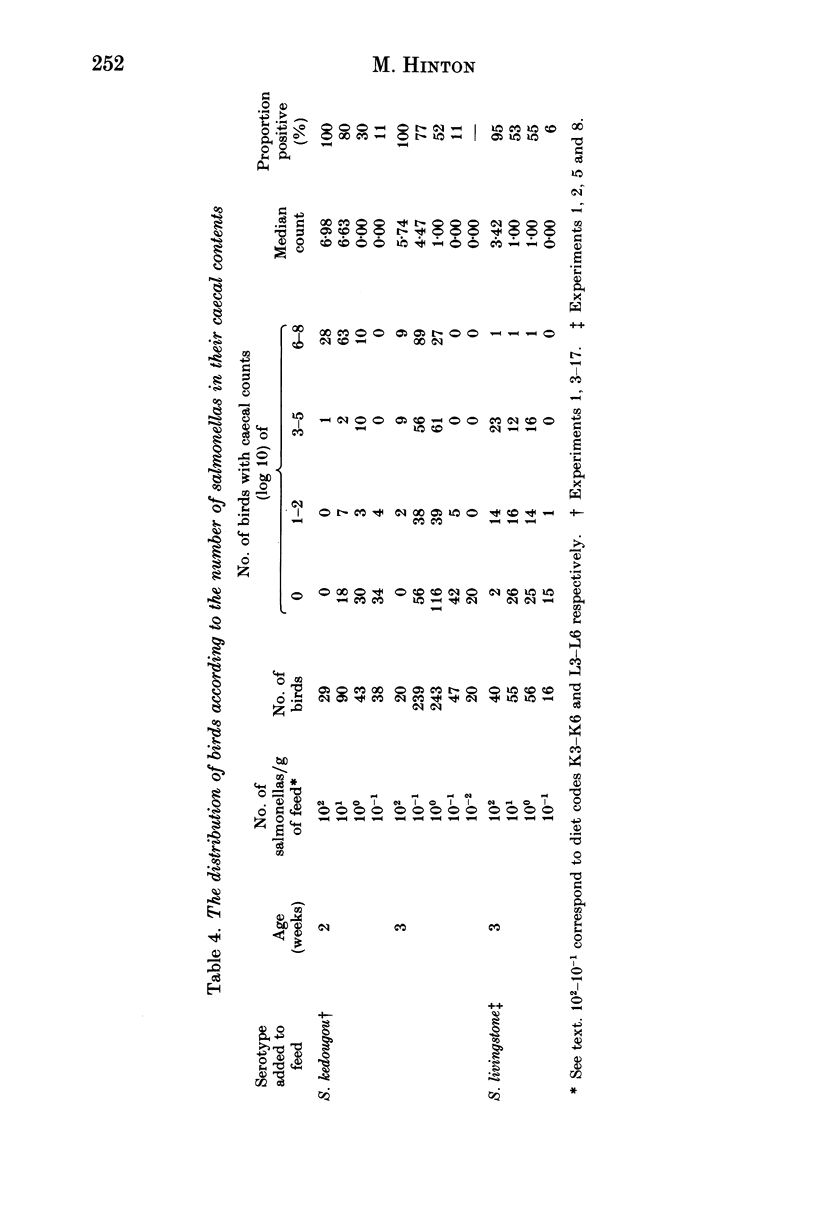
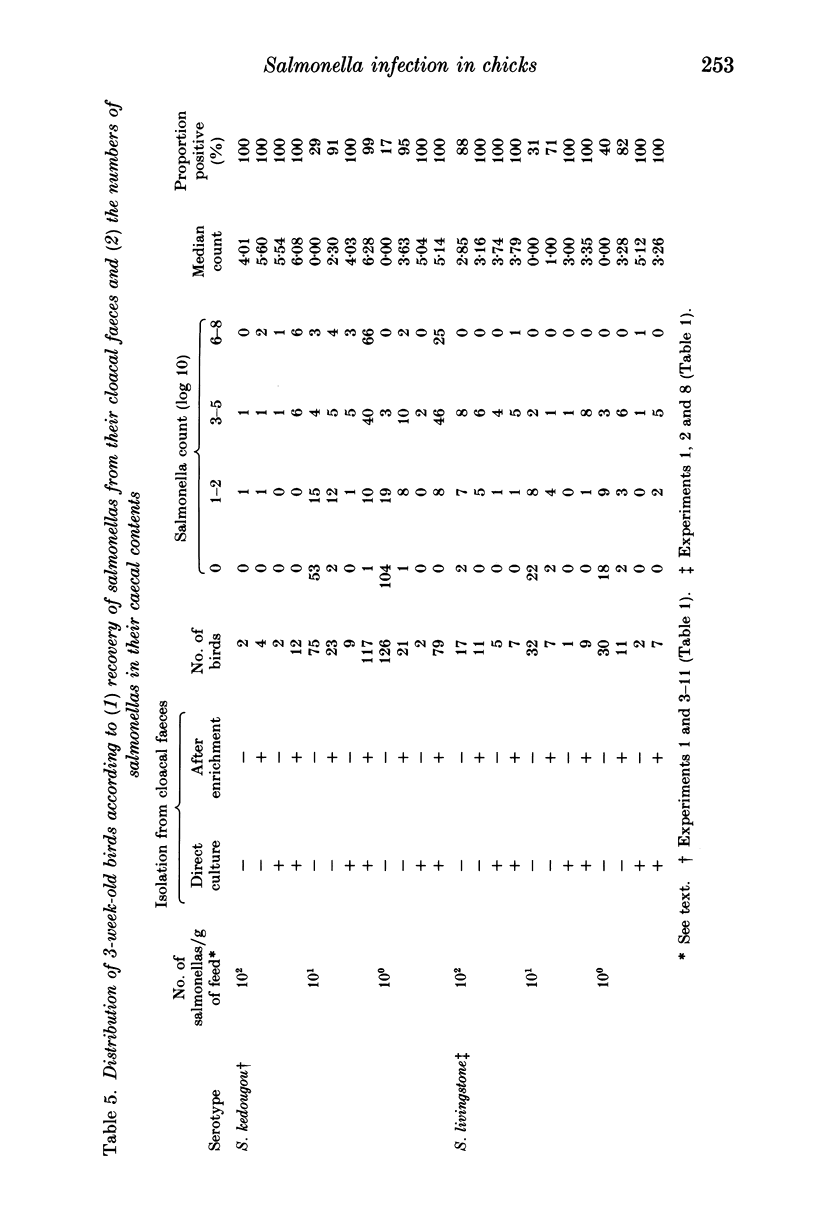
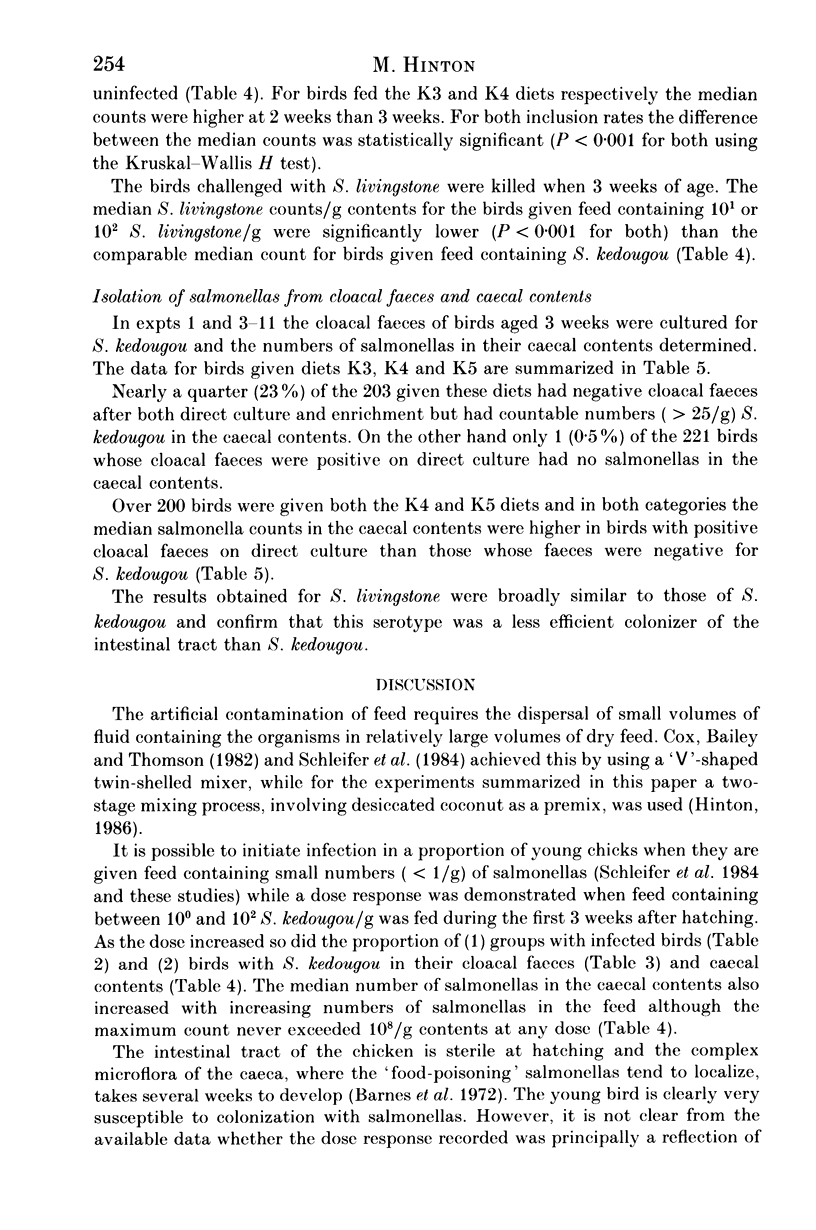

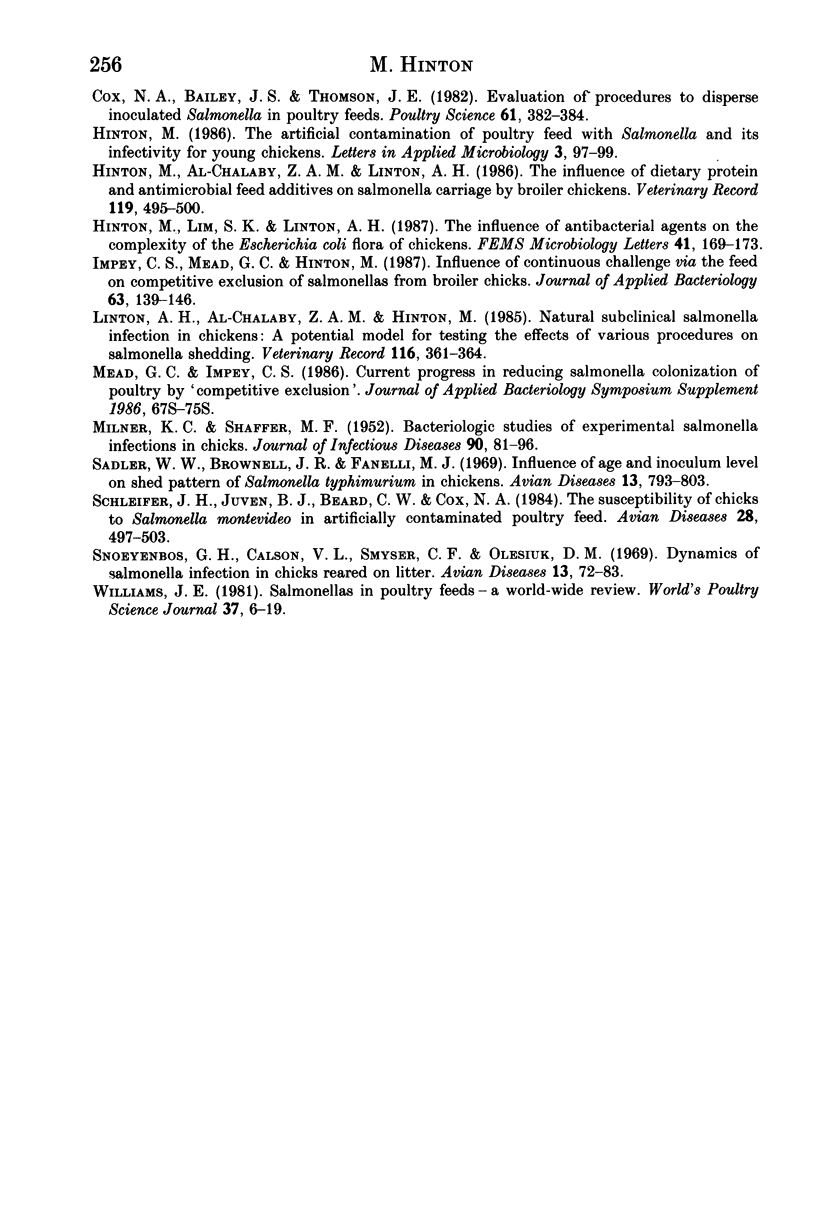
Selected References
These references are in PubMed. This may not be the complete list of references from this article.
- Barnes E. M., Mead G. C., Barnum D. A., Harry E. G. The intestinal flora of the chicken in the period 2 to 6 weeks of age, with particular reference to the anaerobic bacteria. Br Poult Sci. 1972 May;13(3):311–326. doi: 10.1080/00071667208415953. [DOI] [PubMed] [Google Scholar]
- Cox N. A., Bailey J. S., Thomson J. E. Evaluation of procedures to disperse inoculated Salmonella in poultry feeds. Poult Sci. 1982 Feb;61(2):382–384. doi: 10.3382/ps.0610382. [DOI] [PubMed] [Google Scholar]
- Hinton M., Al-Chalaby Z. A., Linton A. H. The influence of dietary protein and antimicrobial feed additives on salmonella carriage by broiler chickens. Vet Rec. 1986 Nov 15;119(20):495–500. doi: 10.1136/vr.119.20.495. [DOI] [PubMed] [Google Scholar]
- Impey C. S., Mead G. C., Hinton M. Influence of continuous challenge via the feed on competitive exclusion of salmonellas from broiler chicks. J Appl Bacteriol. 1987 Aug;63(2):139–146. doi: 10.1111/j.1365-2672.1987.tb02696.x. [DOI] [PubMed] [Google Scholar]
- Linton A. H., Al-Chalaby Z. A., Hinton M. H. Natural subclinical salmonella infection in chickens: a potential model for testing the effects of various procedures on salmonella shedding. Vet Rec. 1985 Apr 6;116(14):361–364. doi: 10.1136/vr.116.14.361. [DOI] [PubMed] [Google Scholar]
- MILNER K. C., SHAFFER M. F. Bacteriologic studies of experimental Salmonella infections in chicks. J Infect Dis. 1952 Jan-Feb;90(1):81–96. doi: 10.1093/infdis/90.1.81. [DOI] [PubMed] [Google Scholar]
- Mead G. C., Impey C. S. Current progress in reducing salmonella colonization of poultry by 'competitive exclusion'. Soc Appl Bacteriol Symp Ser. 1986;15:67S–75S. [PubMed] [Google Scholar]
- Sadler W. W., Brownell J. R., Fanelli M. J. Influence of age and inoculum level on shed pattern of Salmonella typhimurium in chickens. Avian Dis. 1969 Nov;13(4):793–803. [PubMed] [Google Scholar]
- Schleifer J. H., Juven B. J., Beard C. W., Cox N. A. The susceptibility of chicks to Salmonella montevideo in artificially contaminated poultry feed. Avian Dis. 1984 Apr-Jun;28(2):497–503. [PubMed] [Google Scholar]
- Snoeyenbos G. H., Carlson V. L., Smyser C. F., Olesiuk O. M. Dynamics of salmonella infection in chicks reared on litter. Avian Dis. 1969 Feb;13(1):72–83. [PubMed] [Google Scholar]


